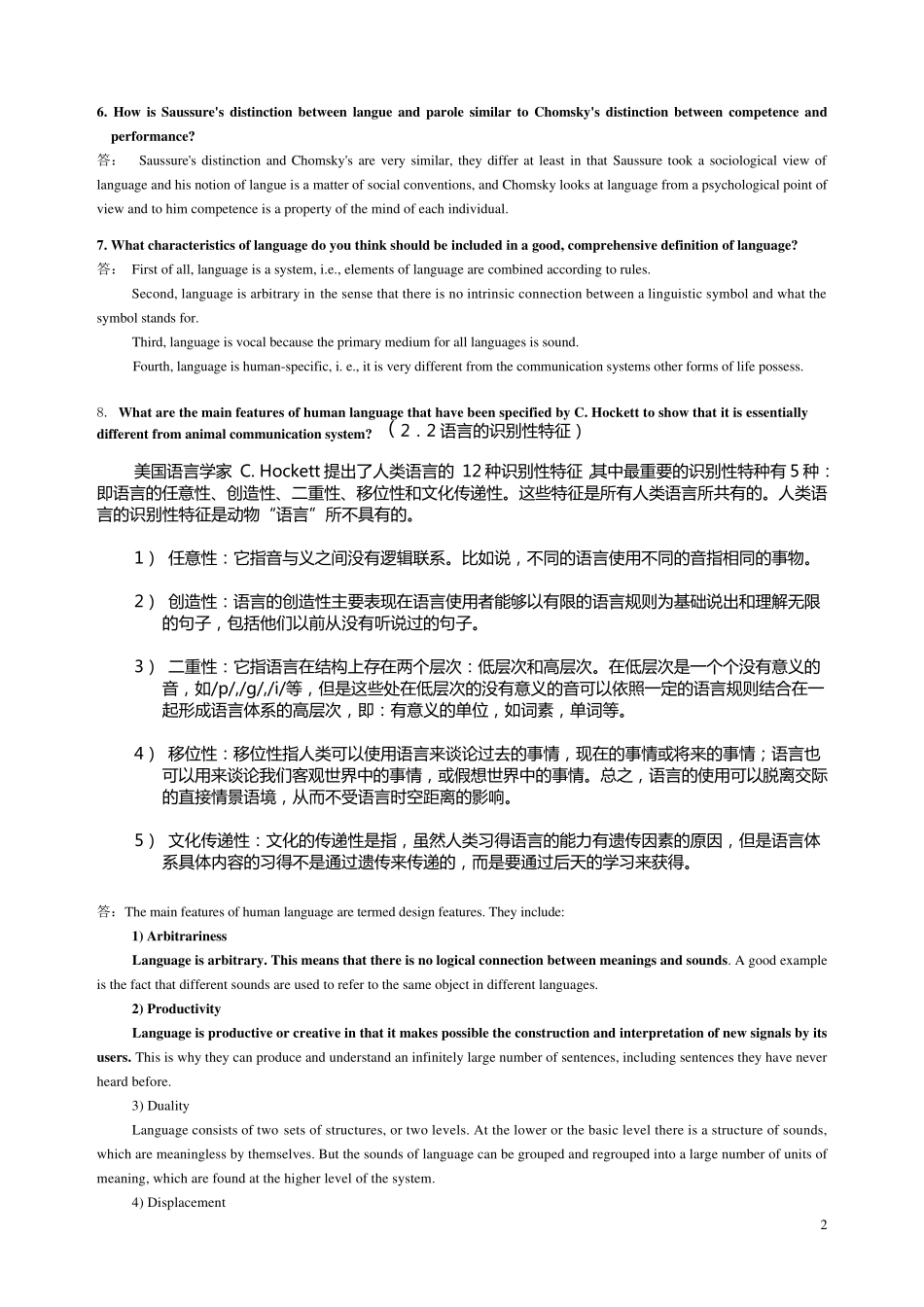1 《新编简明英语语言学教程》第二版 第 1-3 章练习题 参考答案 Chapter 1 Introduction P13 1. How do you interpret the following definition of linguistics: Linguistics is the scientific study of language? 答: Linguistics is based on the systematic investigation of linguistic data, conducted with reference to some general theory of language structure. In order to discover the nature and rules of the underlying language system, the linguists has to collect and observe language facts first, which are found to display some similarities, and generalizations are made about them; then he formulates some hypotheses about the language structure. The hypotheses thus formed have to be checked repeatedly against the observed facts to fully prove their validity. In linguistics, as in any other discipline, data and theory stand in a dialectical complementation, that is, a theory without the support of data can hardly claim validity, and data without being explained by some theory remain a muddled mass of things. 2. What are the major branches of linguistics? What does each of them study? 答: The major branches of linguistics are: (1) phonetics: it studies the sounds used in linguistic communication; (2) phonology: it studies how sounds are put together and used to convey meaning in communication; (3) morphology: it studies the way in which linguistic symbols representing sounds are arranged and combined to form words; (4) syntax: it studies the rules which govern how words are combined to form grammatically permissible sentences in languages; (5) semantics: it studies meaning conveyed by language; (6) pragmatics: it studies the meaning in the context of language use. 3. In what basic ways does modern linguistics diff...


